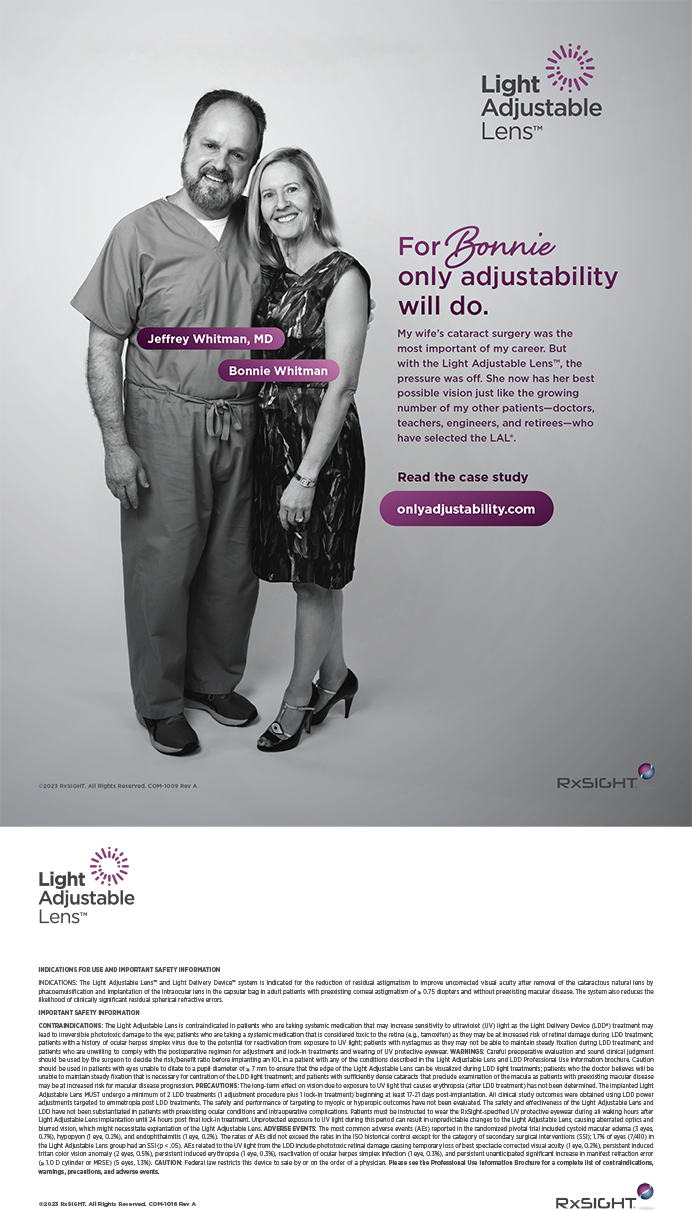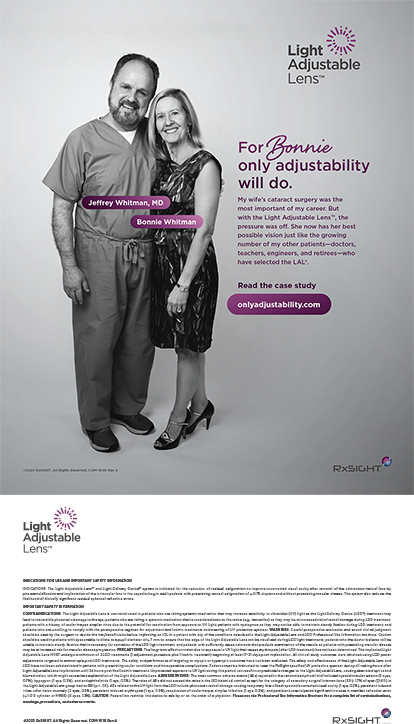The annual meeting of the American Society of Cataract and Refractive Surgery recently held in San Francisco offered a wealth of fantastic information from all aspects of ophthalmology. Great free papers, courses, and symposia were only a few of the meeting's highlights. Impressive innovations, new technologies, and novel approaches to old procedures rounded out an already informative and productive event.
Of the 261 free paper presentations available at the meeting, I noticed 63, or 25%, were unequivocally dedicated to complications. These papers either described a complication or provided management recommendations or avoidance techniques. As surgeons, do we direct 25% of our clinic and surgical time to complications avoidance or management? Certainly not, but I do know we expend a great deal of energy trying to avoid and prevent complications — not always the best management practice.
Fortunately surgeons can and do successfully manage complications and restore their patients' trust as well as vision.The separation between our one chance at executing a flawless procedure and managing a complication is all too slight. As such, prevention and avoidance are immensely more palatable than having to effectively manage a surgical complication, and today's medicolegal environment offers little room for error.
In this issue of Cataract & Refractive Surgery Today, several valued colleagues provide their insights into and recommendations for improving our surgical practices.Edward Manche, MD, and Weldon Haw, MD, describe surgically induced astigmatism following conductive keratoplasty and laser thermal keratoplasty. Renée Solomon, MD, and Eric Donnenfeld, MD, review the management of flap striae. Ronald Krueger, MD, and Maria Regina Chalita, MD, describe the clinical implications of spherical aberration and its management to optimize vision. R. Bruce Grene, MD, contributes an article on dealing with the complications of ?New? PRK that every reader should consider. Tal Raviv, MD, addresses the management of prolapsed vitreous into the anterior chamber in relation to managing a traumatic cataract.
Last but not least, William Fishkind, MD, guides us back into the anterior chamber and notes the complications and management of hydrodissection in cataract surgery.As this issue of CRSToday highlights, an ounce of prevention is truly worth more than a pound of cure. Our goal is to arm you with timely, in-formative advice on avoiding or managing the complications every practitioner could face.
We sincerely hope you and your practice benefit from the insightful contributions of our experienced colleagues. Please enjoy this issue of CRSToday.


